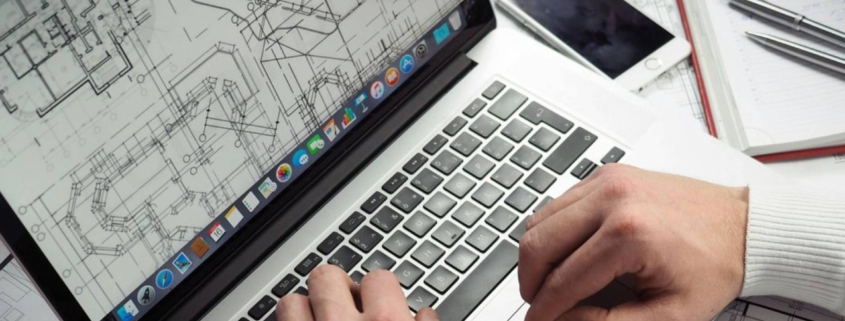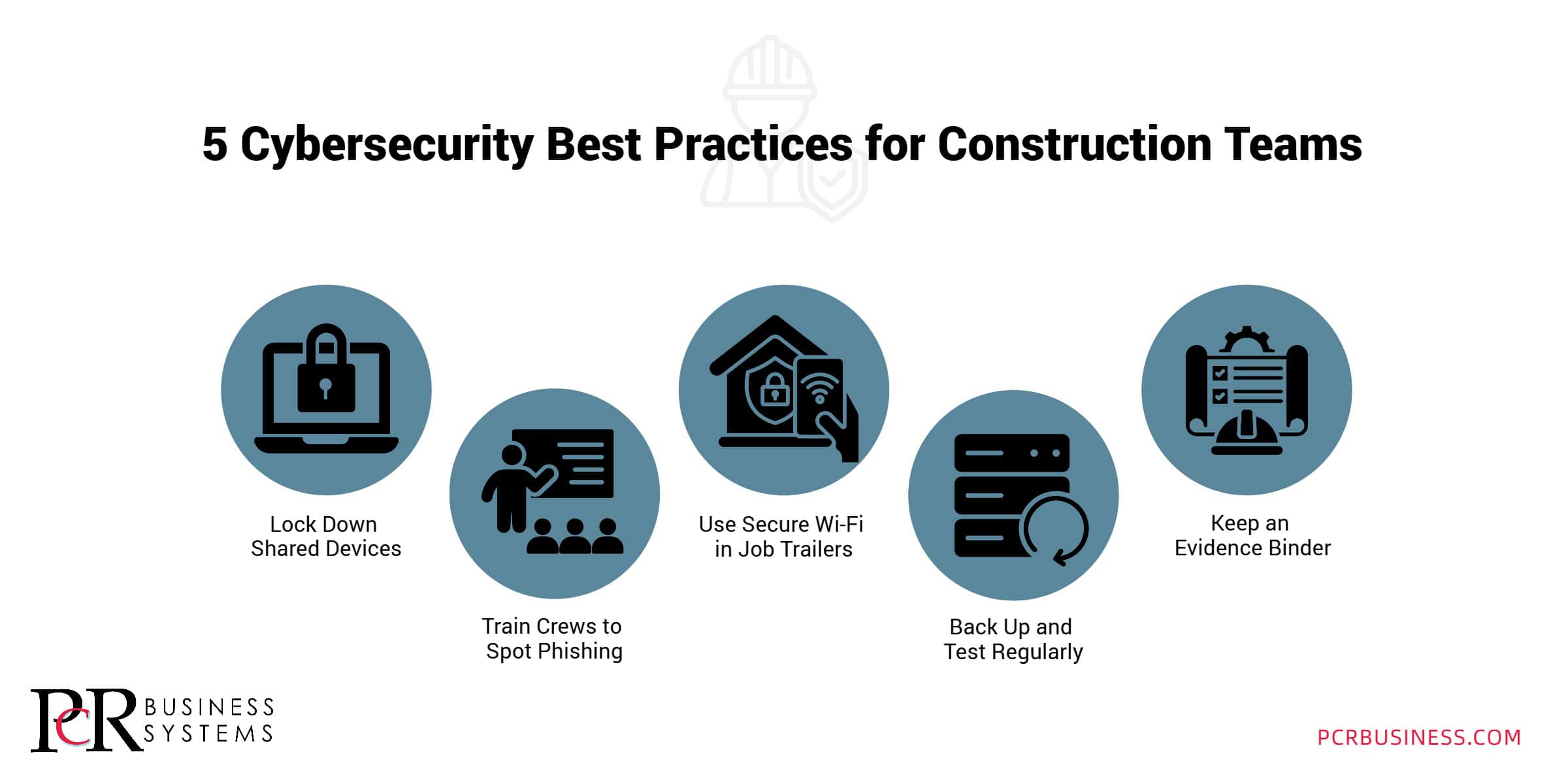5 Cybersecurity Best Practices for Ohio Construction Teams

By: PCR Business Systems
In construction, time is money, and every project depends on teamwork, equipment, and communication running smoothly. But what about your digital tools? From tablets in the field to Wi-Fi in the job trailer, your technology is just as critical as the concrete you pour. Unfortunately, it’s also a prime target for cybercriminals. Construction companies are increasingly on the radar for hackers because of their large project budgets, reliance on third-party vendors, and valuable data like blueprints and contracts.
That means cybersecurity in construction can’t be an afterthought. It has to be part of how you operate every day. Below are five practical best practices construction leaders can put into place right now.
1. Lock Down Shared Devices
Jobsite crews often rotate iPads, laptops, and even smartphones. Without protections, that’s like leaving the job trailer door wide open. Mobile Device Management (MDM) tools let you enforce passcodes, push software updates automatically, and remotely wipe a device if it goes missing. That way, one misplaced iPad doesn’t become a gateway into your company’s entire network.
2. Train Crews to Spot Phishing
Most cybersecurity in construction breaches begin with one click on a bad link. Hackers disguise malicious emails as invoices, DocuSign requests, or vendor updates. A short quarterly “tailgate talk” on phishing awareness pays off big. Show your supers and project managers real-world examples so they know what’s suspicious—and what to delete without opening.
3. Use Secure Wi-Fi in Job Trailers
Job trailers need more than a consumer-grade hotspot. A secure setup should include a firewall, LTE/5G router, and segmented Wi-Fi networks (separating guest access from crew access). This prevents a hacker in the parking lot, or even a well-meaning subcontractor, from jumping onto your business systems.
4. Back Up and Test Regularly
Backups only work if they can be restored. Too many businesses find out the hard way, during a ransomware attack, that their backups are incomplete or corrupted. Schedule quarterly restore tests so you know for sure your team can recover quickly and keep projects moving.
5. Keep an Evidence Binder
Clients, auditors, and insurers want proof that you’re taking cybersecurity seriously. Keeping a record of MFA usage, patching schedules, backup tests, and phishing training makes compliance smoother. A simple evidence binder (digital or physical) helps you stay ahead of requirements like CMMC or ODOT and positions your company as a trusted, professional partner.
Final Word: Cybersecurity doesn’t have to be complicated. For construction companies, it’s about taking a few smart steps consistently. Protect your devices, train your teams, secure your networks, test your backups, and keep records. With these basics in place, you’ll reduce your risk, safeguard your reputation, and keep projects on schedule.
Schedule a meeting with PCR President Pat Carroll to learn more about ensuring you have the proper cybersecurity in construction controls in place.



